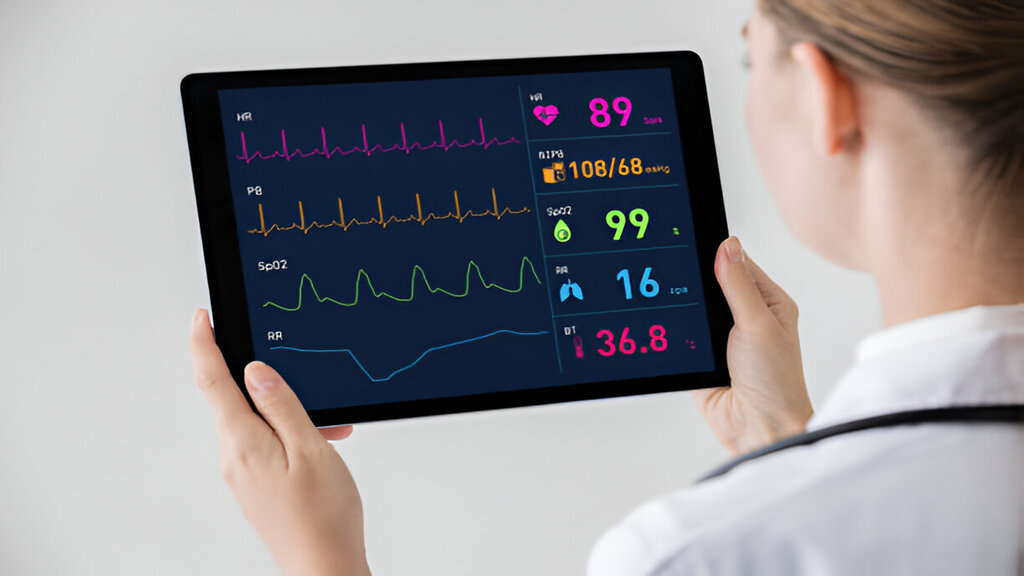Healthcare is undergoing an enormous transformation driven by advances in technology. Healthcare professionals streamline processes and improve the patient experience. The range pf software tools includes electronic medical records (EHRs), telemedicine, and AI (AI) applications.
This article focuses on the excellent applications of software that are changing the healthcare landscape.
Electronic Health Records (EHRs)
Electronic Health Records (EHRs) are now fundamental to modern healthcare. EHR systems such as Epic, Cerner, and Allscripts favor complete digital records of medical histories, treatments, and test payoffs. They offer various advantages over paper records, such as improved access, precision, and security.
Epic Systems
Epic System is among the most frequently used EHR systems worldwide. It is a unified database that provides instant access to patient data across various health settings. Epic’s interoperability enables seamless communication between various healthcare providers, which improves treatment coordination. The patient portal, MyChart, empowers patients to take control of their health by accessing their health records, scheduling appointments, and informing their healthcare providers.
Telemedicine Platforms
Telemedicine has witnessed an increase in frequency and a boost, especially since the COVID-19 outbreak. Healthcare ERP Software eliminates the need for in-person visits and improves access to healthcare with popular telemedicine services, including Teladoc, Amwell, and Doxy.me.
Amwell:
Amwell al provides telehealth solutions to meet medical requirements of all kinds including therapy, urgent care, nutrition, and treatment. Amwell’s platform works with EHR systems, which ensures healthcare continuity. The white-label option lets healthcare providers provide branded telehealth services that improve patient trust and engagement.
Doxy.me:
Doxy.me is a primary, browser-based Telemedicine platform designed to be simple. It does not require any installation or downloads and is accessible to patients with limited technical skills. Doxy.me is a security and privacy-focused website that complies with HIPAA, GDPR, and other regulations. The free version of the service allows telemedicine to be used by small practices and independent providers.
Practice Management Software
Software for managing practices (PMS) is vital to simplifying administrative tasks, increasing efficiency, and improving the quality of patient care. The most popular PMS options, such as Athenahealth, eClinicalWorks, and NextGen Healthcare, offer comprehensive tools to schedule, bill, and manage patients.
Athenahealth
Ahenahealth’s PMS on the cloud is fully integrated into the EHR system, delivering the same platform for administrative and clinical tasks. Its powerful tools for managing revenue benefit practices improve billing and minimize claim denials.
eClinicalWorks:
eClinicalWorks provides a full suite of tools for managing practices, including scheduling, billing, and patient portals. Its compatibility with many EHR systems allows for the seamless exchange of data. eClinicalWorks Telehealth capabilities, together with its PMS, bring total solutions for modern healthcare practices.
NextGen Health:
The NextGen PMS has been created to meet the demands of various healthcare institutions, from small practices to large hospitals. The integrated platform comes with tools for documenting clinical care billing and engagement with patients.
Artificial Intelligence (AI) in Healthcare
AI is changing healthcare by increasing the accuracy of diagnosis, forecasting patient outcomes, and personalizing treatment plans. AI-driven devices such as IBM Watson Health, Aidoc, and PathAI have been at the heart of this revolutionary shift.
IBM Watson Health:
IBM Watson Health leverages AI to analyze vast quantities of clinical data and prepare insights to aid decision-making. Its Oncology platform aids oncologists in creating customized treatment plans based on the most recent research in medicine and patients’ specifics. Watson’s capabilities for natural language processing permit it to extract valuable data from unstructured clinical notes and EHR systems.
PathAI
PathAI concentrates on pathology driven by AI and aims to increase the accuracy and efficacy of diagnosis. Machine learning algorithms use it to analyze the pathology slide, aiding pathologists in identifying cancerous cells as well as other abnormalities. The tools of PathAI increase the accuracy of diagnosis, boost accuracy, decrease variability, and aid in research on pathology.
Clinical Decision Support Systems (CDSS)

Clinical Decision Support Systems (CDSS) improve the quality of patient care. The most popular CDSS tools are UpToDate, Medscape, and VisualDx, which integrate seamlessly into clinical care workflows and provide timely and pertinent information.
The UpToDate database
The UpToDate CDSS is an extensively used CDSS offering evidence-based clinical information that can aid decision-making. The extensive database covers various medical subjects such as diagnosis, prognosis, and treatment. Its integration with EHR systems guarantees that healthcare professionals have access to the most recent guidelines and research at the time of treatment.
Medscape:
Medscape offers a full suite of medical tools that include clinical reference material, drug information, and medical news. Medscape’s CDSS features, like a drug interaction test tool and a disease reference library, aid in the clinical decision-making process and assure patient safety. Medscape’s mobile app ensures that medical professionals can access important information while on the move.
VisualDx
VisualDx is a diagnostic instrument that utilizes an image database to help doctors identify and treat medical diseases. The image library contains an array of dermatological, ophthalmological, and infectious illnesses. VisualDx’s AI-driven symptoms checker offers different diagnoses based on the patient’s reported symptoms and the clinical evidence.
Conclusion
Leading ERP systems in ksa are changing how healthcare is delivered and empowering doctors to provide better care with more effectiveness. From EHRs and telemedicine platforms to AI software and CDSS, the latest developments are changing the healthcare landscape. As technology continues to advance with each passing day, the potential for improvement in patient experience efficiency, operational efficiency, and accessibility to healthcare is enormous. With these technologies, medical professionals will be on top of the latest developments in healthcare delivery, ensuring they offer the perfect possible care for their patients.